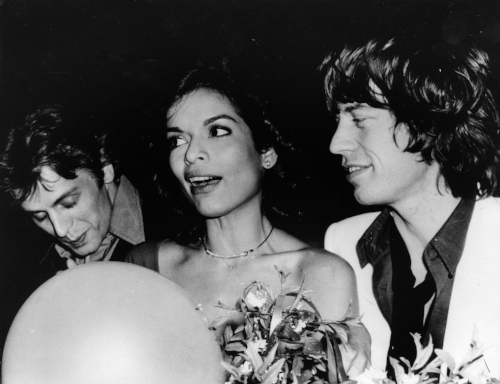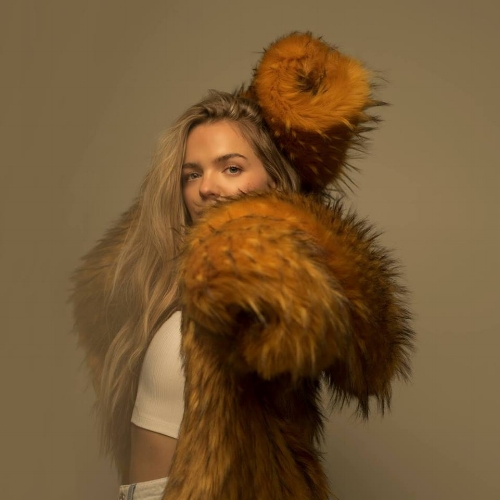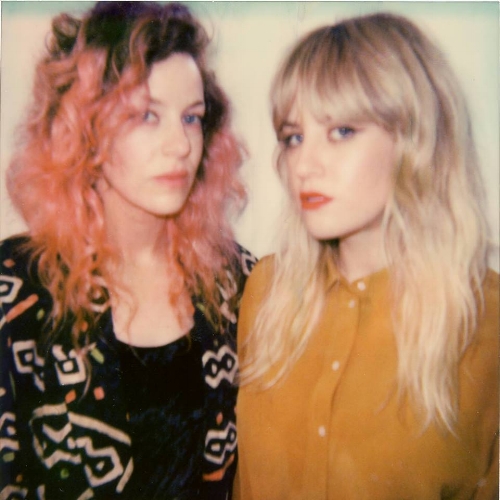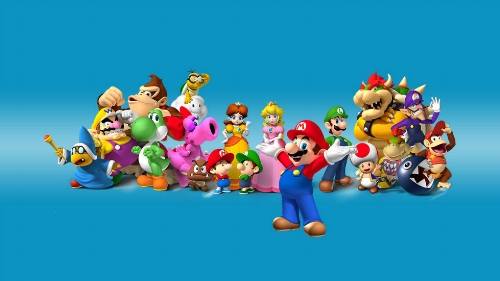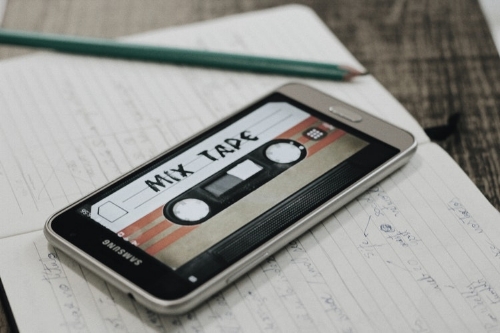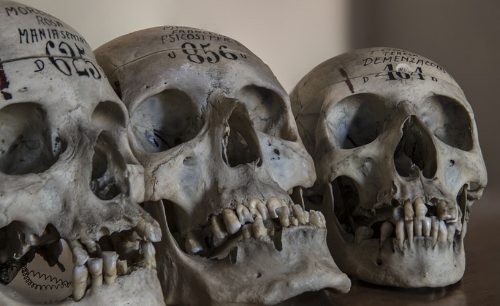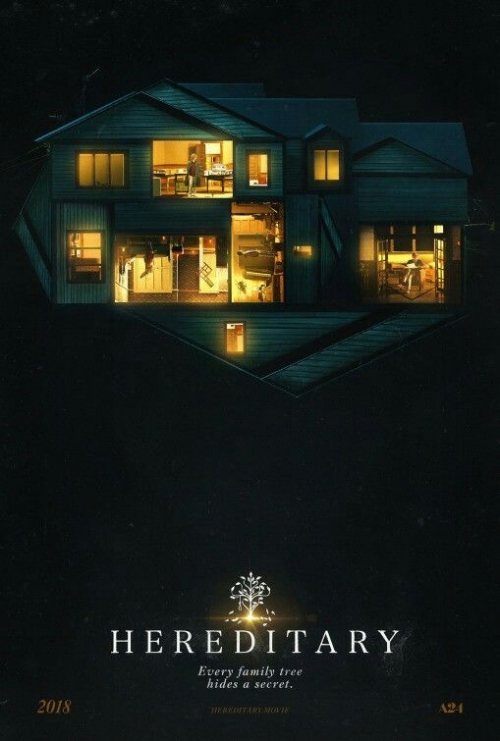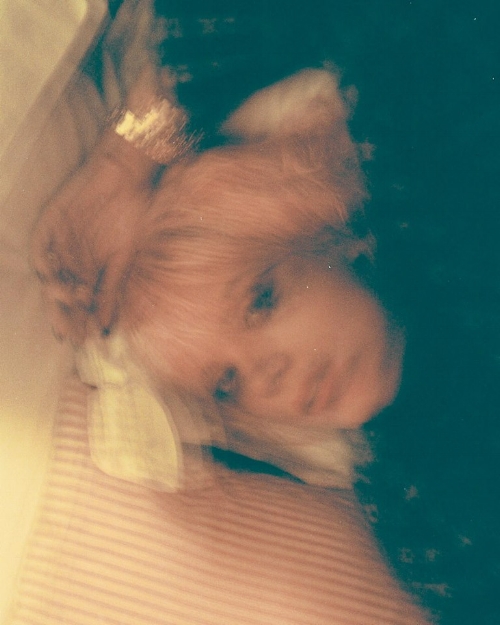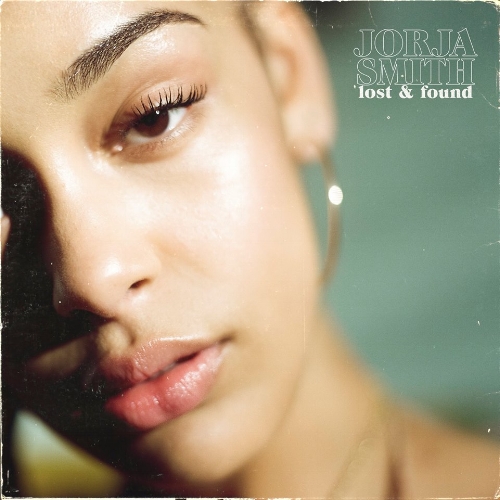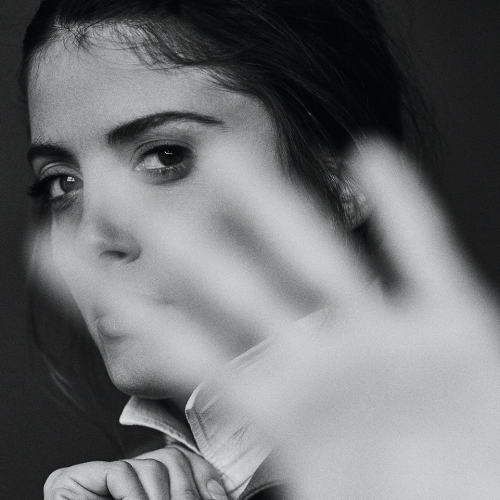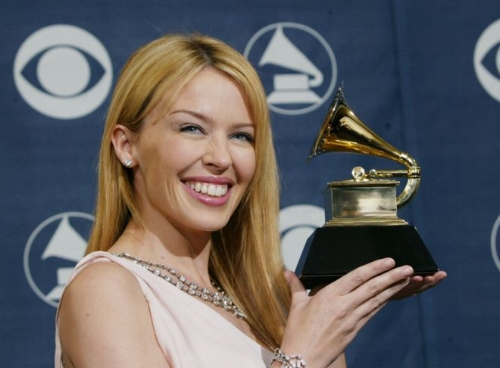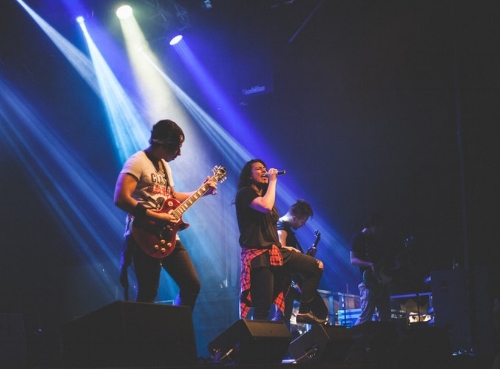FEATURE:
Young Hearts Run Free...
IN THIS PHOTO: Studio 54, New York City/PHOTO CREDIT: Michael Norcia/Getty
Studio 54: The Music, Mayhem and Majesty
__________
THERE is a lot of talk about…
IN THIS PHOTO: Studio 54/PHOTO CREDIT: Getty Images
and renewed interest in the legendary Studio 54. It was a mecca for excess, lacking inhibitions and debauchery in the 1970s. Perhaps it is the years between 1977 and 1979 where its glorious first era began and ended (that is subject to reinterpretation and expansion!). The club existed previous to that but the celebrity-attracting years put the space on the map and was the go-to club in New York. For those who need a brief history of Studio 54; Wikipedia provides a neat and handy breakdown:
“Studio 54 is a former nightclub and currently a Broadway theatre, located at 254 West 54th Street, between Eighth Avenue and Broadway in Midtown Manhattan, New York City. The building, originally built as the Gallo Opera House, opened in 1927, after which it changed names several times, eventually becoming CBS radio and television Studio 52.
In the late 1970s, at the peak of the disco dancing and music trend, the building was renamed after its location and became a world-famous nightclub and discotheque.[4][5][6] The nightclub founders spent hundreds of thousands of dollars on professional lighting designand kept many of the former TV and theatrical sets, in the process creating a unique dance club that became famous for its celebrity guest lists, restrictive (and subjective) entry policies (based on one's appearance and style), and open club drug use. Founded and created by Steve Rubell and Ian Schrager in 1977, it was sold in 1980 to Mark Fleischman,[7][8][9] who reopened the club after it had been shut down following the conviction of Rubell and Schrager on charges of tax evasion. In 1984, Fleischman sold the club, which continued to operate until 1986”.
IN THIS PHOTO: Steve Rubell, Michael Jackson; Steven Tyler of Aerosmith and Cherie Currie of The Runaways at Studio 54 on 31st May, 1977/PHOTO CREDIT: Bobby Bank/WireImage
You listen to stories from those who survived those heady days and would think it was Caligula’s stag party! The rampant drug-taking and loose sexual morals – the awareness of H.I.V. and other S.T.D.s was not as acute as it is now – and there was a sense of the 1960s’ free love and looseness that was transposed and reignited in those four walls. In fact, it was not only the dancefloor and main arena that played host to coming-together and outrageous activity: every toilet and corner of the building witnessed sexual lewdness, wild drinking and drug-taking. It sounds like the sort of club Satan would frequent if he has a bucket list but, in actually, Studio 54 was a space where people harmonised and shared a love of music. There was drug-taking and sex and, whilst moral indignation and outrage closed Studio 54; when the lights were up and the music was on; it was a church for Disco-lovers and those who wanted an escape. I will end with a soundtrack/playlist that collates some quintessential Studio 54 jams but there seem to be two sides: the music played there and the evocative score; the goings-on of the patrons and the reputation it gained. There is a new documentary out that looks at the club and what went on behind closed doors. Whilst some critics have accused the piece of being dry and lacking real revelation – if it were not a documentary then more liberties would be taken and it would be more explicit – but it shows why it was such a sought-after destination and how the club progressed and, sadly, ended.
IN THIS PHOTO: Grace Jones at Studio 54 in March of 1979/PHOTO CREDIT: AP
A film was released in 1998 and, whilst it did not get too many hot reviews; it was an interesting interpretation of the club and what it was about. I guess, even with all the money in the world and an 18 certificate; could you truly capture the magic, murkiness and haze that wafted through the floor in the 1970s?! Maybe it would be too crude and voyeuristic showing how things really were at Studio 54. There is another documentary that looked at Studio 54 but, in actuality, there is no single and unifying representation that authentically and adequately distilled the true essence. Who were the types of people who were being let in (and excluded) from the club in the 1970s?
“Celebs in the late 1970s pretty much had to go to Studio 54 or risk being left-out and permanently excluded. The nightclub had its regulars: Andy Warhol, Truman Capote, Halston, Cher, Diana Ross, Brooke Shields, Michael Jackson, Calvin Klein, Bianca Jagger, Liza Minnelli, Rudolf Nureyev, and Debbie Harry…. but to list every celeb who graced its disco floor would be nearly impossible: Stallone, Beatty, Travolta… it was a who’s who of the disco-era’s “beautiful people”.
But a special place was reserved downstairs for the most beautiful of all….
Rumors of Studio 54’s exclusive basement are the stuff of legend. The club, famous for excluding the huddled stinking masses of normal people, had an even more exclusive area downstairs! God only knows what sort of debauchery took place down there, because there was plenty of debauchery to be found even on the main floor…”.
IN THIS PHOTO: Studio 54 (circa 1970)/PHOTO CREDIT: Waring Abbott/Michael Ochs Archives/Getty Images
There is a lot of legend and rumour regarding some events that supposedly happened in the club. Bianca Jagger, in fact, did ride a white horse through Studio 54 during its birthday celebrations and there were enough illegal activity and carnality to offend even the most conservative New Yorker during that time. It is a shame the noise and essence of Studio 54 extended past the building and created this bad reputation. What we did get, away from the celebrity and illicitness was a booming and evocative soundtrack that remains peerless and effortless inspiring. The Disco giants congregated through the speakers and exhilarated the hungry club-goers. It is a shame there cannot be a Studio 54 active and remaining today. Maybe Disco would seem a bit kitsch and short-lived – the novelty of a genre that has all-but-died might wear thin – but it might not be the worse idea! Perhaps there could be a Dance or Pop club but, in New York, there is nothing like Studio 54. In 2018, laws are tightened and there are noise curfews; there are strict checks at doors and we could not expect a loose-lipped and ethically ambiguous 1970s hangout to appeal to authorities during this time. It would be closed very soon and it would be a very bitter lesson.
IN THIS PHOTO: A woman dancing at Studio 54 in 1977/PHOTO CREDIT: Waring Abbott/Getty Images
I guess we have to celebrate what it was and, for a brief moment, what it gave to the world. Steve Cuozzo, writing for the New York Post last year celebrated forty years of salaciousness and sensation:
“…No Big Apple nightlife venue of the last half of the 20th century ever made as big a splash on the popular culture as Studio 54, which opened 40 years ago this week. As an editor who worked in the same room where Claudia cranked out story after story about the latest antics there, I was near-desperate to explore the belly of the beast myself.
The sidewalk was a scary zoo of drunk and drugged clubgoers jostling for position. Everyone under the giant marquee was yelling, “Steve, Steve” (for co-owner Steve Rubell) or “Marc, Marc” (for all-powerful doorman Marc Benecke).
IN THIS PHOTO: Dancer Mikhail Baryshnikov with Bianca and Mick Jagger at Bianca's 1977 birthday party/PHOTO CREDIT: Getty Images/AP
…Studio 54 was a seductive engine of denial that the city was inexorably sliding into a tailspin. We hadn’t heard of AIDS yet. There were half as many murders in 1977 as there would be in 1990. Even so, omens of doom were all around. The broke municipality had to fire thousands of cops. A power blackout prompted looting and arson that laid waste to much of my childhood Brooklyn neighborhood. Hundreds of thousands of residents flew town on the heels of Johnny Carson’s “Tonight Show” move to Los Angeles.
Forty years later, the city hasn’t collapsed — quite the opposite. And a new Studio 54, or anything like it, would be impossible today”.
IN THIS PHOTO: Bianca Jagger rides in on a white horse at during her birthday celebrations at Studio 54. PHOTO CREDIT: Rose Hartman/Archive Photos/Getty Images
How many of those fabled and seemingly-exaggerated tales are actually legitimate?! One of the most famous events, Bianca Jagger riding on a white horse in 1977, has been confirmed:
“Bianca Jagger riding through the club on a white horse in 1977, Schrager says, actually happened as people retell it.
"It wasn't planned for Bianca to get on the horse," he says, adding they had intended for it to be ridden solely by a nude model posing as Lady Godiva, led by another nude model in painted-on clothes. Press photographers invited to capture celebrity guests sent the image far and wide. "That was the mother of all photo ops," Schrager adds.
It also began what would be a series of live animals brought in for special occasions, including doves for Jagger's birthday, livestock at a party for Dolly Parton, an elephant that posed for photos with Linda Blair, and, in December of 1977, a leopard and a panther. Included in the book is a letter from New York City Department of Health reminding Schrager and Rubell that wild animals in bars violated two different health codes”.
IN THIS PHOTO: Diana Ross at Studio 54 in New York City in 1979/PHOTO CREDIT: Bettmann/Getty Images
Rolling Stone documented a few of the best-loved and most notorious stories from Studio 54’s history:
“Although their songs were must-plays on the dance floor, Nile Rodgers and Bernard Edwards of Chic found themselves unable to clear Benecke's ultra-strict door policy on New Year's Eve 1977. "We were invited to meet with Grace Jones at Studio 54," Rodgers told Sound on Sound in 2005. "She wanted to interview us about recording her next album. At that time, our music was fairly popular – 'Dance, Dance, Dance' was a big hit – but Grace Jones didn't leave our name at the door and the doorman wouldn't let us in." They waited around until the early morning hours. "We stood there as long as we could take it, until our feet were just finally way too cold. We were really totally dejected. We felt horrible."
The men sulked back to Rodgers' apartment just a few blocks away. "We grabbed a couple of bottles of champagne from the corner liquor store and then went back to my place, plugged in our instruments and started jamming." Aching from the rejection, Rodgers and Edwards poured their anger into the music. "We were just yelling obscenities: Fuck Studio 54 ... Fuck 'em ... Fuck off ... Fuck those scumbags ... fuck them! And we were laughing," Rodgers described to Haden-Guest. "We were entertaining the hell out of ourselves. We had a blast. And finally it hit Bernard. He said, 'Hey Nile, what you're playing sounds really good.'"
Within half an hour they composed a song called "Fuck Off." After some lyrical tweaking they arrived at a slightly more Top 40–friendly title. "First, we changed it from 'fuck off' to 'freak off,' and that was pretty hideous. ... Then, all of a sudden it just hit me. One second the light bulb went on and I sang 'Aaaaahh, freak out!'" Released as "Le Freak" that September, the song would become Chic's first Number One and biggest hit. Perhaps understandably, Rodgers now considers Benecke a friend”.
IN THIS PHOTO: Jerry Hall, Debbie Harry and Palmona Picasso were among the celebrities who frequented Studio 54/PHOTO CREDIT: Ullstein Bird via Getty Images
The sex-filled imaginations and nude-hipped partnerships were not all that exaggerated it seems – although there was a ‘special area’ where one could go:
“Once you found yourself inside the hallowed grounds of Studio 54, the next place you wanted to go was the fabled basement; a cavernous, dingy, decidedly unglamorous space decorated with damaged banquets, pillars of rolled carpet and set pieces from past parties. It was down here that the privileged few were invited to indulge in their wildest desires. "Celebrities headed for the basement. Getting high low-down," Grace Jones wrote in her 2016 memoir. "Not even those who got inside the club could all make it into the basement. You'd stumble into half-hidden rooms filled with a few people who seemed to be sweating because of something they had just done, or were about to do." Security men brandishing walkie-talkies discreetly patrolled the area, removing any uninvited gawkers. The secluded corners furnished with mattresses quickly became a popular feature”.
There have been endless stories and testimony from those who were there and others who wished they were! I would love to see an exhibition open, in London or New York, that replicated the setting and sounds (and smells) that would have been experienced first-hand in the 1970s. It would not only act as nostalgia but a beautiful glimpse into Studio 54’s glory, history and sad demise. It was always doomed for closure – it is no shock people took umbrage and did not want the club near their doorstep. In any case; the most affecting and important memory from Studio 54 is the amazing music that was played and cherished by everyone who visited. Go and see the latest documentary/film about Studio 54 – it is gaining some great reviews, too – and get an idea of what the N.Y. space was all about. I wonder, in these safe and unsure signs we will ever see anything as meteoric, controversial and magnetic…
IN THIS PHOTO: The New Year's Eve party of 1979 made headlines around the world/PHOTO CREDIT: Getty Images
IN our lifetime.







